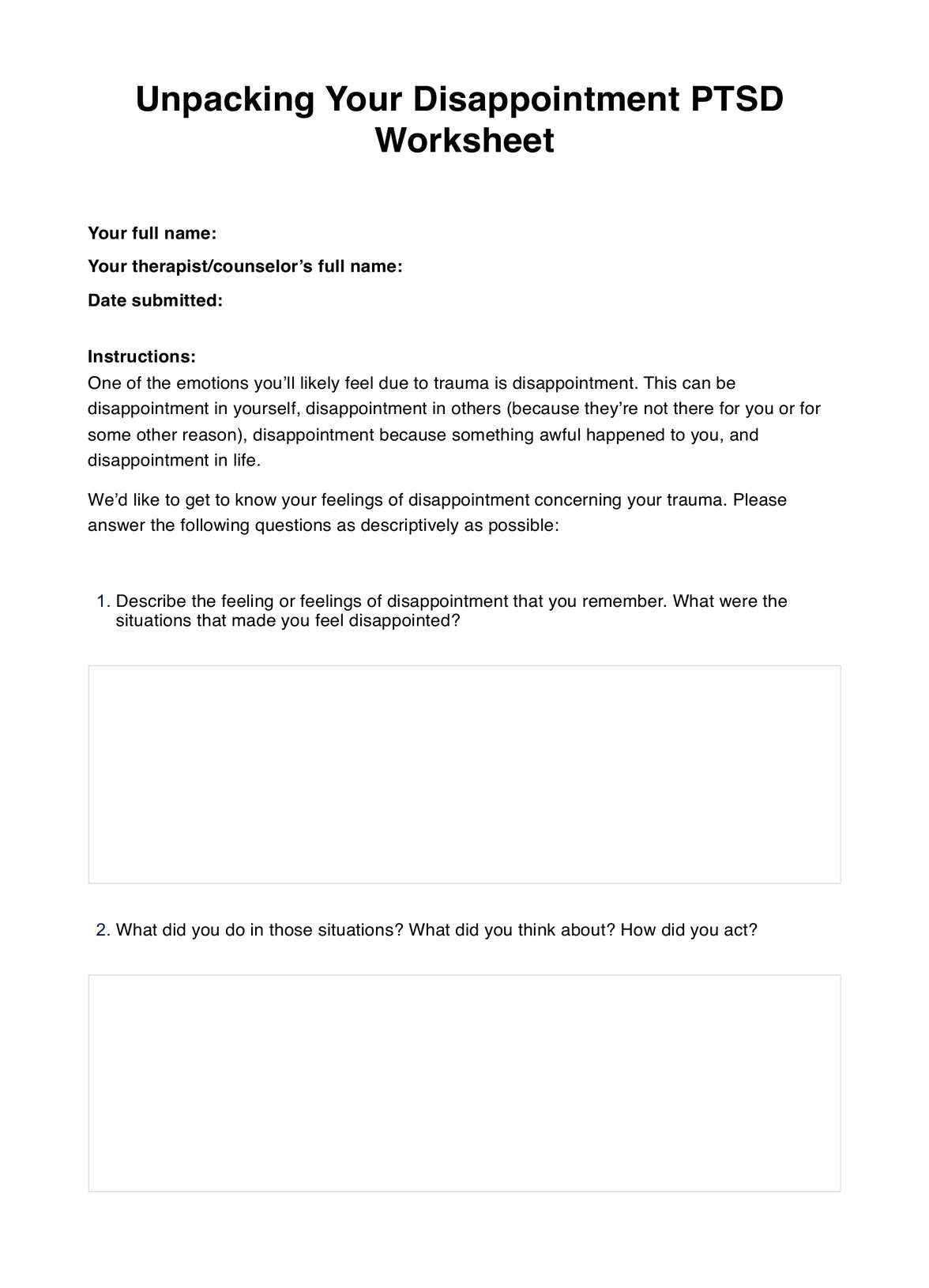It depends on the person. Some are more willing to discuss their emotions than others. For those who find it easy to talk about them, it’ll likely take them at least ten minutes to finish the whole worksheet, assuming they immediately know what to discuss. It’s best to gauge first how comfortable your patient is to discuss their feelings of disappointment. Discuss their time and set a deadline based on your agreement. It’s best to adjust to the patient so they don’t feel unnecessary pressure to constantly discuss something that likely puts them on edge.

Unpacking Your Disappointment PTSD Worksheet
Assess your patient’s PTSD-related disappointment using the Unpacking Your Disappointment PTSD Worksheet!
Unpacking Your Disappointment PTSD Worksheet Template
Commonly asked questions
Based on the instructions, no. Whatever difficulty a patient encounters will come from their PTSD and how comfortable they are discussing it. Thinking about their trauma and associated feelings and behaviors is a touchy subject, so it’s best to let them know they can trust you and that you won’t judge them for their experiences and feelings.
Here are examples of PTSD worksheets that you can issue alongside the Unpacking Your Disappointment PTSD Worksheet:
- Unpacking Your Anger
- Unpacking Your Despair and Hopelessness
- Unpacking Your Empathy
- Unpacking Your Fear
- Unpacking Your Gratitude
- Unpacking Your Happiness
- Unpacking Your Trust
We have downloadable templates for these, too!
EHR and practice management software
Get started for free
*No credit card required
Free
$0/usd
Unlimited clients
Telehealth
1GB of storage
Client portal text
Automated billing and online payments











